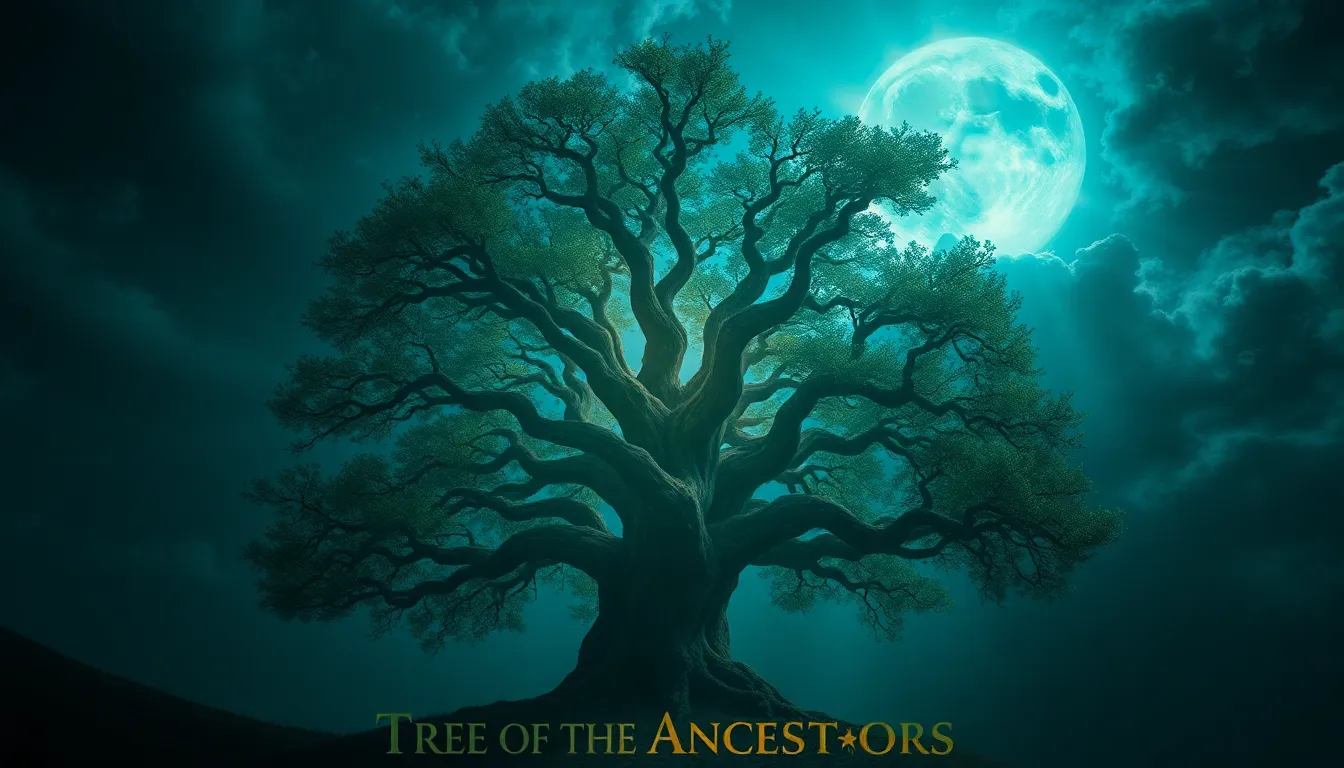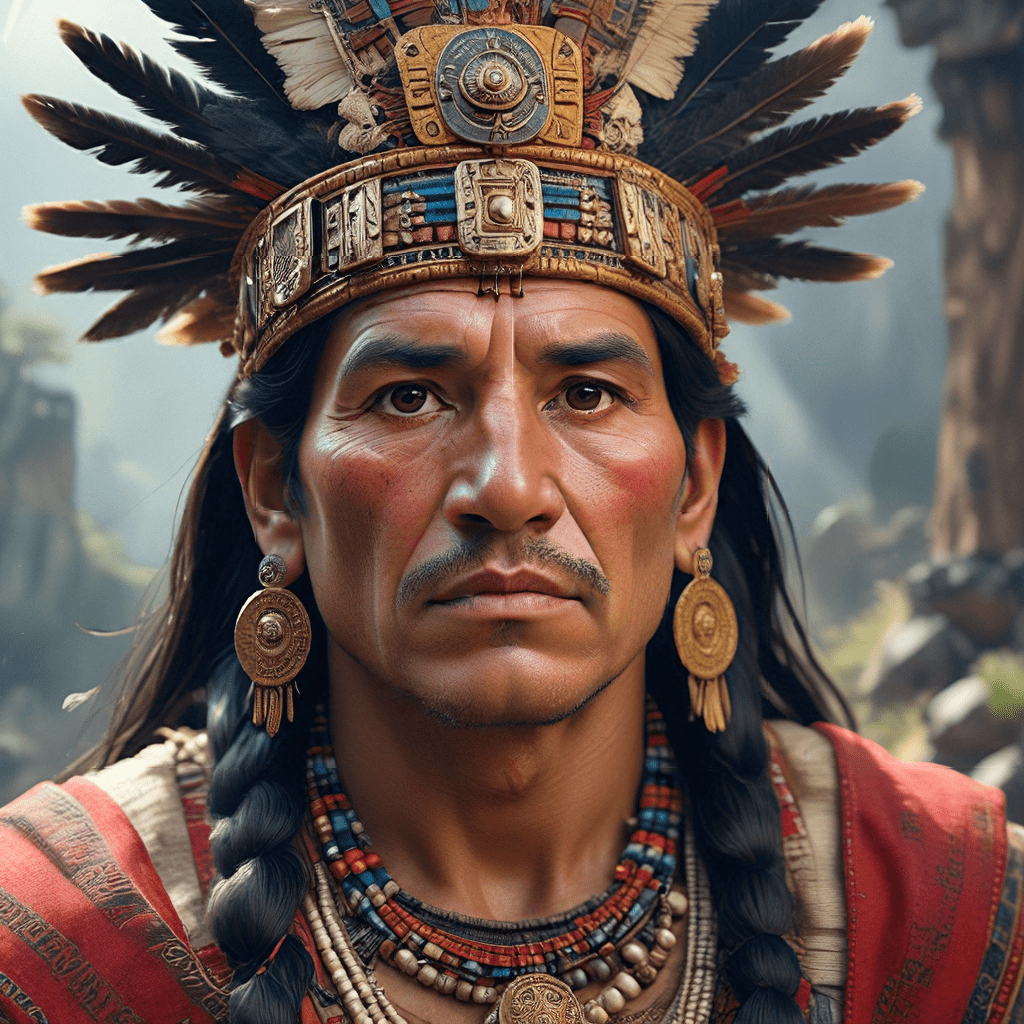The Tree of the Ancestors: Myths of Connection and Heritage
I. Introduction
The concept of the “Tree of Ancestors” serves as a powerful symbol representing the interconnections between individuals and their forebears. Just as branches spread from a trunk, each person is linked to their ancestors, creating a vast network of lineage and heritage. This metaphorical tree is not merely a biological construct but also a rich tapestry of stories, traditions, and cultural significance.
Ancestry and heritage hold immense importance across various cultures. They provide a sense of identity and belonging, allowing individuals to understand their place in the world. The myths and stories surrounding ancestral connections offer insight into the values, beliefs, and histories of societies, often revealing how people perceive themselves and their relationships with those who came before them.
In this article, we will explore the symbolism of trees in heritage, delve into ancient myths and legends, examine the science of genealogy, and discuss the role of oral traditions and storytelling. We will also look at ancestral worship, the evolution of cultural heritage, personal connections to ancestry, and contemporary interpretations of these themes in society.
II. The Symbolism of Trees in Heritage
Trees have long been symbols of strength, growth, and connection in many cultures. Their deep roots and expansive branches serve as metaphors for family lineage and the continuity of life.
A. Cultural significance of trees in different societies
- Native American cultures: Trees are often seen as sacred beings, representing the interconnectedness of all life.
- Asian cultures: The banyan tree symbolizes immortality and wisdom, while bamboo represents flexibility and resilience.
- European traditions: The oak tree is revered for its strength and longevity, often associated with strength and endurance.
B. The tree as a metaphor for family lineage and growth
The tree serves as a powerful metaphor for family lineage, illustrating how individuals are connected through generations. Each branch represents different family members, while the trunk signifies the common ancestry that unites them. This imagery emphasizes the growth and evolution of families over time.
C. Comparing the tree of life to the tree of ancestors
While both the tree of life and the tree of ancestors symbolize connection, the tree of life often focuses on the broader spectrum of existence and interconnectedness among all living beings. In contrast, the tree of ancestors emphasizes the specific connections to human lineage and heritage, highlighting the personal narratives that shape our identities.
III. Ancient Myths and Legends of Ancestry
Throughout history, various cultures have crafted creation myths and legends that explain the origins of humanity and its connection to ancestors. These stories often serve to reinforce cultural values and beliefs.
A. Overview of creation myths related to ancestors
Creation myths frequently depict the emergence of humanity from primordial ancestors or deities, establishing a sacred bond between people and their forebears. These narratives are often rich in symbolism and serve to explain the relationship between the living and the spiritual.
B. Key stories from various cultures
- Norse mythology: Yggdrasil, the World Tree, connects all realms of existence, symbolizing the interconnectedness of life and ancestors.
- Indigenous stories: Many Indigenous cultures have tales that link the land, people, and ancestors, emphasizing respect for nature and heritage.
C. The role of myth in shaping identity and heritage
Myths play a crucial role in shaping cultural identity. They provide frameworks for understanding the past and serve as a guide for future generations. By recounting these stories, communities can preserve their heritage and instill a sense of belonging in their members.
IV. Genealogy: The Science Behind the Myths
While myths and stories provide a rich narrative for understanding ancestry, genealogy offers a scientific approach to tracing lineage. This intersection of science and storytelling enriches our understanding of our heritage.
A. Historical approaches to tracing ancestry
Historically, genealogy was often conducted through family records, oral histories, and community knowledge. People relied on documents such as birth and marriage certificates to piece together their family trees.
B. The rise of modern genealogy and DNA testing
In recent years, the field of genealogy has transformed with the advent of DNA testing. This scientific approach allows individuals to uncover their ancestral roots more accurately and connect with relatives they may never have known.
C. How science complements myths and stories of heritage
Science provides concrete evidence that can support or challenge traditional narratives. By combining scientific findings with cultural stories, individuals can gain a more holistic understanding of their ancestry.
V. Oral Traditions and Storytelling
Oral history plays a significant role in preserving ancestral tales and cultural heritage. Through storytelling, communities pass down knowledge, values, and traditions from one generation to the next.
A. The role of oral history in preserving ancestral tales
Oral traditions are vital for keeping the stories of ancestors alive, especially in cultures where written records are scarce. These narratives often carry moral lessons and cultural wisdom, reinforcing community identity.
B. Notable examples of storytelling practices across cultures
- African griots: Storytellers who preserve the history and culture of their people through music and oral narratives.
- Native American storytelling: Elders share myths and teachings that connect the community to their ancestors and land.
C. The impact of storytelling on identity and community cohesion
Storytelling fosters a sense of identity and belonging. By sharing ancestral tales, communities strengthen their bonds and reinforce shared values, ensuring that the legacy of their ancestors continues to thrive.
VI. Ancestral Worship and Rituals
Many cultures engage in rituals that honor their ancestors, reflecting the deep respect and reverence for those who came before. These practices often serve to maintain a connection between the living and the dead.
A. Exploration of rituals honoring ancestors in various cultures
- Dia de los Muertos: A Mexican holiday celebrating deceased loved ones with altars, offerings, and festivities.
- Ancestors’ Day in China: Families visit gravesites, offering food and incense to honor their ancestors.
B. The significance of ancestor veneration in spiritual practices
Ancestor worship is often intertwined with spiritual beliefs. It serves as a means of seeking guidance, protection, and blessings from those who have passed, reinforcing the idea that ancestors continue to play a role in the lives of the living.
C. Contemporary expressions of ancestral connection
In today’s world, many people seek ways to connect with their heritage through practices such as genealogy research, participation in cultural events, and the creation of personal altars honoring their ancestors.
VII. Cultural Heritage and Its Evolution
The evolution of cultural heritage is influenced by factors such as migration, globalization, and the blending of traditions. These dynamics shape the way communities perceive their ancestry.
A. How migration and globalization impact ancestral ties
As people move across borders, they carry their cultural heritage with them. This migration often leads to the blending of traditions and the creation of multicultural identities, reshaping the understanding of ancestry.
B. The blending of myths and heritage in multicultural societies
In multicultural societies, the fusion of different myths and heritage can lead to new narratives that reflect the diverse backgrounds of individuals. This blending enriches the cultural landscape and offers new ways to connect with ancestry.
C. The preservation of cultural heritage in the modern world
Despite the challenges posed by globalization, many communities actively work to preserve their cultural heritage through education, festivals, and the promotion of traditional practices. This preservation is vital for maintaining a sense of identity amid changing times.
VIII. Personal Connection to Ancestry
Understanding one’s heritage can have a profound psychological impact, providing individuals with a sense of belonging and identity. Personal narratives often play a crucial role in this connection.
A. The psychological impact of understanding one’s heritage
Research shows that individuals who engage with their ancestry often report a stronger sense of identity and purpose. Exploring family histories can foster resilience and a greater understanding of personal values.
B. Personal narratives and their role in connecting with ancestors
Sharing personal stories about ancestors can create bonds among family members and encourage younger generations to appreciate their heritage. These narratives highlight the struggles and triumphs of previous generations.
C. The relevance of ancestry in today’s identity politics
In contemporary society, discussions around ancestry often intersect with identity politics, as individuals and groups




